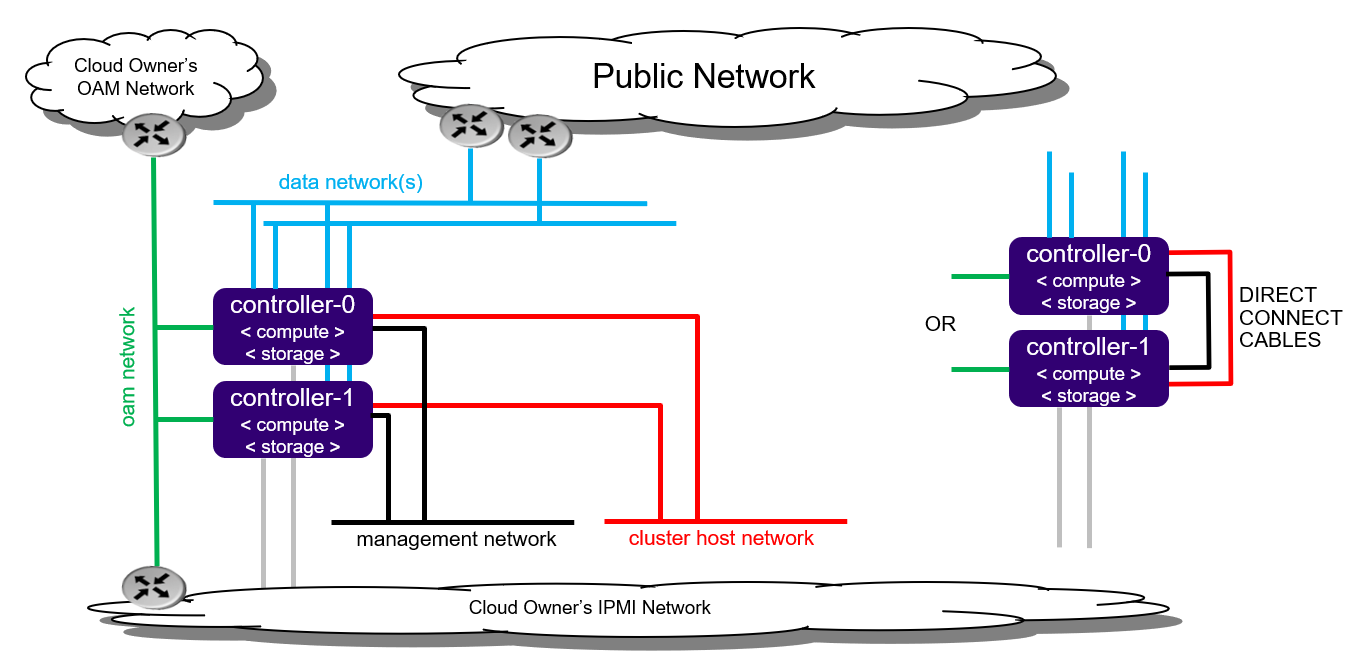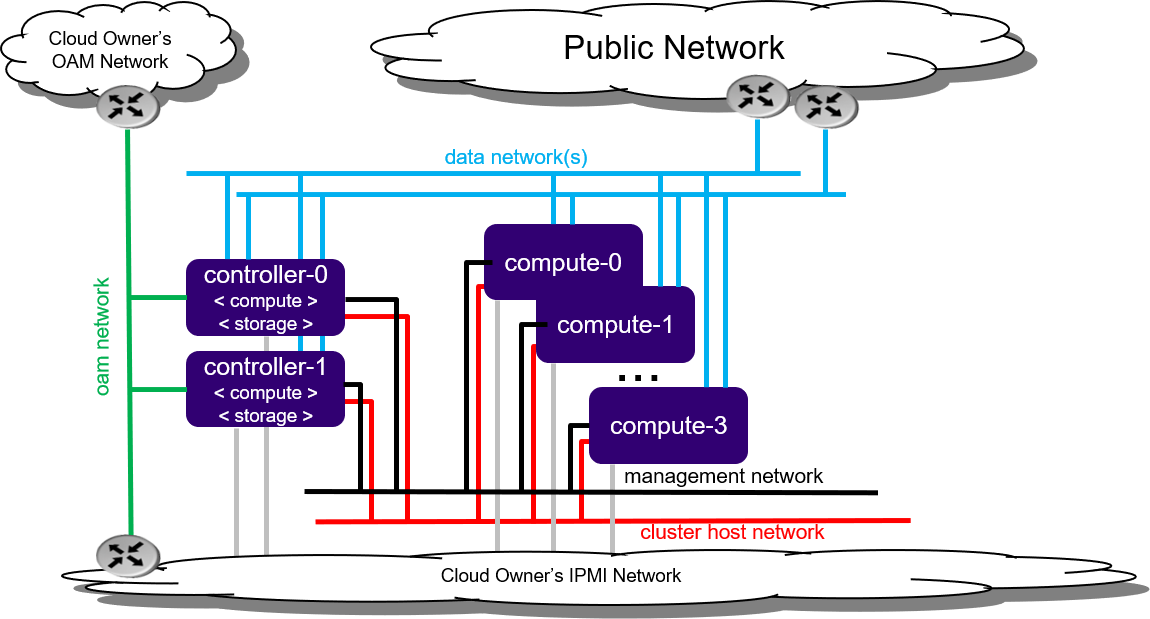All-in-one (AIO) Duplex Configuration¶
StarlingX AIO Duplex provides a scaled-down StarlingX deployment option that combines controller, storage, and worker functionality on a redundant pair of hosts.

See Common Components for a description of common components of this deployment configuration.
This deployment configuration provides a solution for situations in which protection against overall server hardware faults and only a small amount of cloud processing / storage power is required.
HA services run on the controller function across the two physical servers in either Active/Active or Active/Standby mode.
The optional storage function is provided by a small-scale two node Ceph cluster using one or more disks/OSDs from each server, and provides the backend for Kubernetes’ PVCs.
The typical solution requires two or more disks per server; one for system requirements and container ephemeral storage, and one or more for Ceph OSDs.
Optionally, instead of using an internal Ceph cluster across servers, you can configure an external Netapp Trident storage backend.
Hosted application containers are scheduled on both worker functions.
In the event of an overall server hardware fault:
all controller HA services enter active mode on the remaining healthy server, and
all hosted application containers impacted by the failed server are recovered on the remaining healthy server.
On an All-in-one Duplex system, two modes of connection are supported for the management and cluster host network.
- Direct
This mode uses direct peer-to-peer connections between the two nodes for the management and an internal cluster host network connection, eliminating the need for a ToR switch port for these networks.
StarlingX recommends a 10GE shared management and cluster host network with LAG for direct connections. If the management network must be 1GE (to support PXE booting), then a separate 10GE cluster host network with LAG is also recommended. The use of LAG addresses failover considerations unique to peer-to-peer connections.
- Switch-based
This mode uses a ToR switch to complete the management and cluster host network connections.
Intel Xeon D Processor¶
In addition to regular all-in-one deployments, StarlingX Simplex and Duplex provide support for small scale deployments on the Intel Xeon D family of processors using a smaller memory and CPU footprint than the standard Simplex configuration.
For low-cost or low-power applications with minimal performance demands (40 containers or fewer), StarlingX Simplex can be deployed on a server with a single Intel Xeon D class processor. The platform-reserved memory and the maximum number of worker threads are reduced by default, but can be reconfigured if required.
Extending the capacity of the AIO-Duplex Deployment¶
Up to fifty worker/compute nodes can be added to the All-in-one Duplex deployment, allowing a capacity growth path if starting with an AIO-Duplex deployment.

The extended capacity is limited up to fifty worker/compute nodes as the controller/worker function on the AIO controllers has only a portion of the processing power of the overall server.
Hosted application containers can be scheduled on either of the AIO controller nodes and/or the worker nodes.
